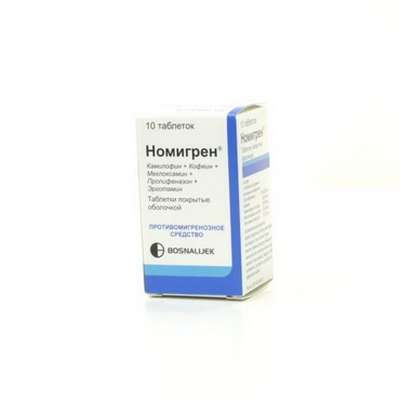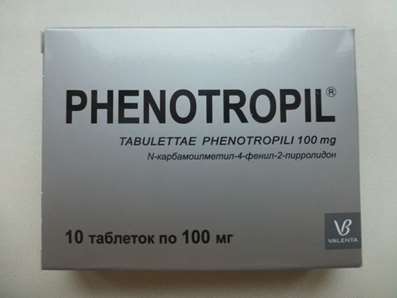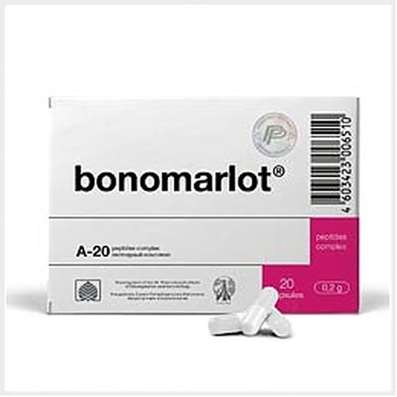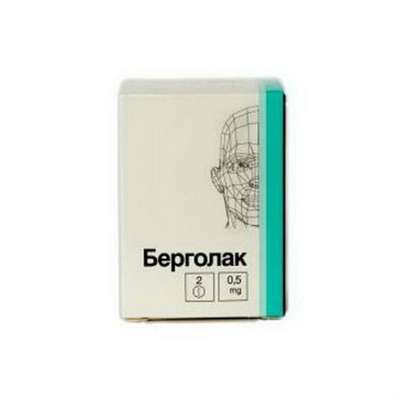Instruction for use: Panoxen
I want this, give me price
Dosage form
Film-coated tablets
Composition
In one tablet:
Active substances:
Diclofenac sodium 50 mg, paracetamol 500 mg.
Excipients:
Corn starch 290 mg, acetylphthalylcellulose (cellacephate) 15 mg, diethyl phthalate 2.5 mg, talc 10 mg, magnesium stearate 10 mg, titanium dioxide 13 mg, microcrystalline cellulose 70 mg, povidone K-30 18 mg, methyl parahydroxybenzoate (methylparaben) 17, 5 mg, propyl parahydroxybenzoate (propylparaben) 4 mg, tablet coating TC 1005 (white) 28.50 mg [hypromellose (hydroxypropylmethylcellulose) 5.5 mg, propylene glycol 4.3 mg, talc 10.8 mg, titanium dioxide 7.98 mg]
Description of dosage form
White or almost white tablets covered with a shell, capsular-shaped, with a risk on one side. Slight roughness is allowed.
Pharmacological group
Combined analgesic agent (non-steroidal anti-inflammatory drug (NSAID) + analgesic non-narcotic agent).
Pharmacodynamics
Panoxen is a combined analgesic drug, the effect of which is due to its constituent components.
Diclofenac - a derivative of phenylacetic acid has anti-inflammatory, analgesic, antipyretic, antiplatelet effect. Inhibiting cycloxygenase (COX) 1 and 2, disrupts the metabolism of arachidonic acid, reduces the number of prostaglandins both in the inflammation focus and in healthy tissues, suppresses the exudative and proliferative phases of inflammation.
Paracetamol is an aniline derivative, inhibits COX mainly in the central nervous system, has little effect on water-salt metabolism and gastrointestinal mucosa (GI tract). In inflamed tissues, peroxidases neutralize the effect of paracetamol on COX 1 and 2, which explains the almost complete absence of anti-inflammatory effect.
Pharmacokinetics
Diclofenac. Absorption is fast and complete, food slows down the absorption rate. After oral administration of 50 mg, the maximum concentration (C max) in the plasma is 1.5 μg / ml, the time to reach the maximum concentration (TCmax) in the plasma is 2-3 hours. The plasma concentration is linearly dependent on the dose.
Changes in the pharmacokinetics of diclofenac against a background of repeated use are not noted. Do not cumulate while observing the recommended interval between meals.
Bioavailability - 50%. The connection with plasma proteins is more than 99% (most of it is associated with albumins). Penetrates into breast milk, synovial fluid; Stax in the synovial fluid is observed 2-4 hours later than in the plasma. The half-life (T 1/2) of the synovial fluid is 3-6 h (the concentration of diclofenac in the synovial fluid 4-6 h after its intake is higher than in the plasma, and remain higher for another 12 h).
About 50% of diclofenac is metabolized during the "first pass" through the liver. The area under the concentration-time curve (AUC) is 2 times lower after ingestion than after parenteral administration of the same dose. Metabolism occurs as a result of repeated or one-time hydroxylation and subsequent conjugation with glucuronic acid. The isoenzyme CYP2C9 also participates in the metabolism of diclofenac. Pharmacological activity of metabolites is less than diclofenac.
Systemic clearance is 260 ml / min. T1 / 2 from plasma - 1-2 hours. 60% of the accepted dose is excreted as metabolites through the kidneys; less than 1% is unchanged, the rest of the dose is excreted as metabolites with bile.
In patients with severe renal insufficiency (creatinine clearance less than 10 ml / min), the excretion of metabolites with bile is increased, while an increase in their concentration in the blood is not observed.
In patients with chronic hepatitis or compensated cirrhosis of the liver, the pharmacokinetic parameters do not change.
Paracetamol. Absorption is high; “—mŗű - 0,5-2 hours; Cmax - 5-20 mcg / ml. Connection with plasma proteins - 15%. Penetrates through the blood-brain barrier. Less than 1% of the dose of paracetamol taken by the lactating mother penetrates into breast milk.
Metabolised in the liver in three main ways: conjugation with glucuronides, conjugation with sulfates, oxidation with microsomal enzymes of the liver. In the latter case, toxic intermediate metabolites are formed, which are subsequently conjugated to glutathione, and then to cysteine and mercapturic acid. The main isoenzymes of cytochrome P450 for this pathway of metabolism are the isoenzyme CYP2E1 (predominantly), CYP1A2 and CYP3A4 (a secondary role). With a deficiency of glutathione, these metabolites can cause damage and necrosis of hepatocytes.
Additional metabolic pathways include hydroxylation to 3-hydroxyparacetamol and methoxylation to 3-methoxyparacetamol, which are subsequently conjugated to glucuronides or sulfates.
In adults, glucuronin prevails, in the newborn (including premature) and young children - sulfation. Conjugated metabolites of paracetamol (glucuronides, sulfates and conjugates with glutathione) have low pharmacological (including toxic) activity.
T1 / 2 1-4 h. It is excreted by the kidneys in the form of metabolites, mainly conjugates, only 3% unchanged. In elderly patients paracetamol clearance decreases and T1 / 2 increases.
Indications
To reduce pain and inflammation at the time of application for: inflammatory diseases of the musculoskeletal system (rheumatoid arthritis, psoriatic, juvenile and chronic arthritis, ankylosing spondylitis, gouty arthritis), acute gouty arthritis.
Degenerative diseases of the musculoskeletal system (deforming osteoarthritis, osteochondrosis).
Lumbago, sciatica, neuralgia, myalgia.
Diseases of the periarticular tissues (tendovaginitis, bursitis). Post-traumatic pain syndromes accompanied by inflammation. Toothache.
Contraindications
Hypersensitivity to the components of the preparation, as well as to other derivatives of phenylacetic acid or aniline; complete or incomplete combination of bronchial asthma, recurrent nasal polyposis and paranasal sinuses and intolerance to acetylsalicylic acid or other NSAIDs (including in history); erosive and ulcerative lesions of the gastrointestinal tract and duodenum, active gastrointestinal bleeding, inflammatory bowel disease, severe hepatic and heart failure; period after aortocoronary shunting; severe renal failure (QC less than 30 ml / min), progressive kidney disease, active liver disease, hyperkalemia, pregnancy, lactation period, children's age.
Carefully
Stomach and duodenal ulcer (remission or history), ulcerative colitis, Crohn's disease, history of liver disease, hepatic porphyria, benign hyperbilirubinemia (including Gilbert's syndrome), viral hepatitis, alcoholic liver damage, chronic cardiac disease insufficiency of mild or moderate severity, arterial hypertension, a significant decrease in the volume of circulating blood (including after extensive surgical intervention), in elderly patients, bronchial asthma, odnovrov (SSRI), ischemic heart disease, cerebrovascular diseases, hyperlipidemia, diabetes mellitus, peripheral arterial disease, smoking, chronic renal failure (CK 30-60 ml / min) , the presence of Helicobacter pylori infection, prolonged use of NSAIDs, alcoholism, severe physical illness, deficiency of glucose-6-phosphate dehydrogenase.
pregnancy and lactation
The safety of the drug during pregnancy and during lactation is not proven. The use of the drug in these groups of patients is contraindicated.
Dosing and Administration
Panoxen is taken orally, without chewing, during or after a meal, with a small amount of water. 1 tablet 2-3 times a day. The maximum daily dose is 3 tablets (150 mg in terms of diclofenac).
The duration of the drug Panoxen depends on the indication for use. In acute conditions, rapidly docked conditions, the drug is used for several days. In chronic inflammatory or degenerative diseases of connective tissue, long-term use of Panoxen is possible.
With long-term use of the drug, it is necessary to carry out regular monitoring for possible erosion of the gastrointestinal mucosa with subsequent development of gastrointestinal bleeding, and also to perform functional tests of the liver with the purpose of early detection of possible hepatotoxicity of the drug.
Side effects
On the part of the digestive system: epigastric pain, nausea, vomiting, diarrhea, dyspepsia, flatulence, anorexia, increased activity of "hepatic" aminotransferases; gastritis, proctitis, bleeding from the digestive tract (vomiting with blood, melena, diarrhea with a trace of blood), ulceration of the gastrointestinal mucosa (with or without bleeding or perforation), hepatitis, jaundice, impaired liver function; stomatitis, glossitis, esophagitis, hemorrhagic colitis, exacerbation of ulcerative colitis or Crohn's disease, constipation, pancreatitis, fulminant hepatitis.
From the side of the nervous system: headache, dizziness; drowsiness; disorders of sensitivity (including paresthesia), memory disorders, tremors, convulsions, anxiety, cerebrovascular disorders, aseptic meningitis, disorientation, depression, insomnia, nightmares, irritability, mental disorders.
From the senses: vertigo; impaired vision (blurred vision, diplopia), hearing impairment, tinnitus, impaired taste sensations.
From the urinary system: acute renal failure, hematuria, proteinuria, interstitial nephritis, nephrotic syndrome, papillary necrosis of the kidneys.
From the hemopoiesis: thrombocytopenia, leukopenia, anemia, including hemolytic or aplastic, agranulocytosis, methemoglobinemia.
Allergic reactions: anaphylactic / anaphylactoid reactions, including a marked decrease in blood pressure (BP) and shock; angioedema (including faces).
From the side of the cardiovascular: a feeling of palpitations, pain in the chest, increased blood pressure, vasculitis, heart failure, myocardial infarction.
On the part of the respiratory system: bronchial asthma (including dyspnea); pneumonitis.
From the skin: skin rash (including bullous); hives; erythema, including multiform and Stevens-Johnson syndrome, Lyell's syndrome, exfoliative dermatitis, itching, hair loss, photosensitivity, purpura, including allergic.
Other: swelling.
Overdose
Paracetamol.
Symptoms, during the first 24 hours after administration - pallor of the skin, nausea, vomiting, anorexia, abdominal pain; disturbance of glucose metabolism, metabolic acidosis. Symptoms of liver dysfunction may appear 12-48 hours after an overdose. In severe overdose - liver failure with progressive encephalopathy, coma, death; acute renal failure with tubular necrosis (including in the absence of severe liver damage); arrhythmia, pancreatitis. Hepatotoxic effect in adults is manifested when taking 4 g or more.
Treatment: introduction of donors of SH-groups and precursors of glutathione-methionine synthesis for 8-9 hours after overdose and acetylcysteine for 8 hours. The need for additional therapeutic measures (further introduction of methionine, iv injection of acetylcysteine) is determined depending on the concentration of paracetamol in the blood, as well as the time elapsed after its administration.
Diclofenac.
Symptoms: vomiting, bleeding from the gastrointestinal tract, epigastric pain, diarrhea, dizziness, tinnitus, lethargy, convulsions, rarely - increased blood pressure, acute renal failure, hepatotoxic effect, respiratory depression, coma.
Treatment: gastric lavage, activated charcoal, symptomatic therapy aimed at eliminating blood pressure increase, renal dysfunction, seizures, gastrointestinal irritation, respiratory depression. Forced diuresis, hemodialysis are ineffective (due to the high connection with plasma proteins and intensive metabolism).
Interaction
Diclofenac.
Increases the concentration in the plasma digoxin, lithium preparations.
Reduces the effect of diuretics, against the background of potassium-sparing diuretics increases the risk of hyperkalemia; against the background of anticoagulants, antiaggregants and thrombolytics (alteplase, streptokinase, urokinase) increases the risk of bleeding (more often from the gastrointestinal tract).
Reduces the effect of hypotensive and hypnotics.
Increases the likelihood of side effects of other NSAIDs and GCS (bleeding from the gastrointestinal tract), toxicity of methotrexate and nephrotoxicity of cyclosporine (due to an increase in their concentration in the plasma).
Acetylsalicylic acid reduces the concentration of diclofenac in the blood.
Reduces the effect of hypoglycemic agents.
Paracetamol increases the risk of developing nephrotoxic effects of diclofenac.
Cefamandol, cefoperazone, cefotetan, valproic acid and plikamycin increase the incidence of hypoprothrombinemia.
Cyclosporine and gold preparations increase the effect of diclofenac on the synthesis of prostaglandins in the kidneys, which is manifested by increased nephrotoxicity.
SSRIs increase the risk of bleeding from the digestive tract.
Simultaneous use with ethanol, colchicine, corticotropin and preparations of St. John's wort increases the risk of bleeding from the gastrointestinal tract.
Means that cause photosensitivity, increase the sensitizing effect of diclofenac to UV irradiation.
The agents blocking a tubular secretion, increase concentration in a plasma of diclofenac, thereby increasing its efficiency and toxicity.
Antibacterial drugs from the quinolone group increase the risk of seizures.
Paracetamol.
Reduces the effectiveness of uricosuric drugs.
Simultaneous use of paracetamol in high doses increases the effect of anticoagulants (a decrease in the synthesis of clotting factors in the liver).
Inducers of microsomal liver enzymes (phenytoin, barbiturates, rifampicin, phenylbutazone, tricyclic antidepressants), ethanol and hepatotoxic agents increase the production of hydroxylated active metabolites, which allows the development of severe intoxications even with a slight overdose.
Long-term use of barbiturates reduces the effectiveness of paracetamol.
Ethanol promotes the development of acute pancreatitis.
Inhibitors of microsomal liver enzymes (including cimetidine) reduce the risk of hepatotoxic effects.
Long-term simultaneous use of paracetamol and NSAIDs increases the risk of developing "analgesic" nephropathy and papillary necrosis of the kidneys, the onset of terminal renal failure.
The prolonged simultaneous use of paracetamol in high doses and salicylates increases the risk of developing kidney or bladder cancer.
Diflunisal increases the plasma concentration of paracetamol by 50%, which increases the risk of hepatotoxicity.
Myelotoxic agents increase the manifestation of hematotoxicity of paracetamol.
special instructions
To reduce the risk of developing adverse events on the part of the gastrointestinal tract, the minimum effective dose should be applied with the minimum possible short course. Because of the important role of prostaglandins in maintaining renal blood flow, caution should be exercised in appointing patients with cardiac or renal insufficiency, as well as in the treatment of elderly people taking diuretics, and patients who for any reason have a decrease in circulating blood volume for example, after extensive surgical intervention). If Panoxen is prescribed in such cases, it is recommended to monitor kidney function as a precautionary measure.
In order to quickly achieve the desired therapeutic effect take 30 minutes before meals. In other cases, take before, during or after a meal in a non-entrained form, with plenty of water.
In patients with hepatic insufficiency (chronic hepatitis, compensated cirrhosis), the kinetics and metabolism do not differ from similar processes in patients with normal liver function. Distorts the indicators of laboratory studies in quantitative determination of glucose and uric acid in the plasma.
Influence on ability to drive vehicles, mechanisms
Care must be taken when driving vehicles and engaging in other activities that require a high concentration of attention and speed of psychomotor reactions.
Form of issue
10 tablets in a blister of aluminum foil and PVC film (PVC).
2 or 10 blisters together with instructions for use in a cardboard box.
Storage conditions
Store in a dry, dark place at a temperature of no higher than 25 į C.
Keep out of the reach of children.
Shelf life
3 years.
Do not use after the expiration date.
Conditions of leave from pharmacies
On prescription.

 Cart
Cart





